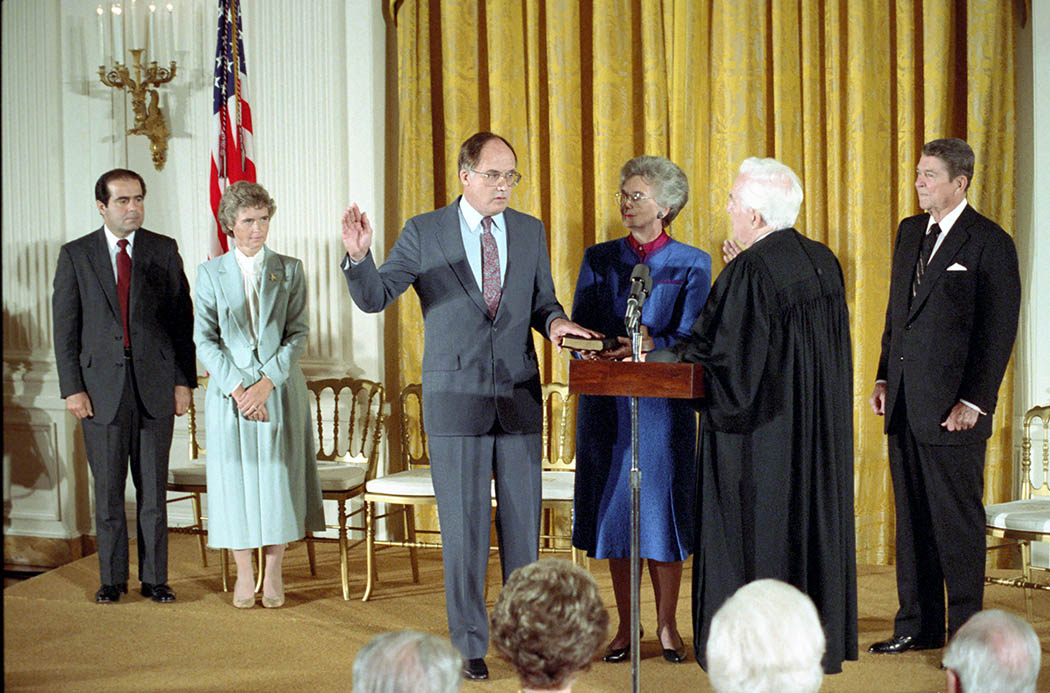On this day in 1986, Antonin Scalia was sworn in as an Associate Justice of the United States Supreme Court. At the same ceremony, William Rehnquist was sworn in as the sixteenth Chief Justice of the United States. President Ronald Reagan used the occasion to praise the two men for their commitment to “judicial constraint.” “They knew that the courts, like the Constitution itself, must not be liberal or conservative,” the President stated. “The question was and is, will we have government by the people?”

Photo Credit: https://www.reaganlibrary.gov/photo-galleries/supreme-court
Rehnquist had been an Associate Justice on the Court since 1971. He had established a reputation as a solid and sometimes defiantly conservative vote on a range of issues. He often stood alone in dissent, particularly in his early years on the Court. In the coming years, the Rehnquist Court would move closer to his position on a range of issues, with decisions limiting congressional authority and constraining the recognition of unenumerated constitutional rights. Rehnquist remained in dissent in numerous significant cases, however, including those involving affirmative action and abortion rights. On some issues, such as women’s rights, Rehnquist showed a willingness to reassess his earlier positions.
Scalia was also recognized as an outspoken judicial conservative, a reputation he secured during his years as a law professor, a lawyer in the Nixon Administration, and, between 1982 and 1986, as a judge on the U.S. Court of Appeals for the D.C. Circuit. Scalia’s most lasting mark on the Court likely will be based not by his opinions for the Court—unlike Rehnquist, he wrote relatively few major majority opinions during his tenure—but by his advocacy for originalism and textualism as methods for interpreting legal texts and by his forceful and often biting writing style.
Rehnquist would serve as the Chief Justice for 19 years, his tenure ending when cancer took his life in 2005. Scalia served on the Court for 30 years, until his death from a heart attack in 2016.
This post was written by ISCOTUS Fellow Michael Halpin, Chicago-Kent Class of 2020, and edited by ISCOTUS Editorial Coordinator Matthew Webber, Chicago-Kent Class of 2019, and ISCOTUS Co-Director and Chicago-Kent Faculty Member Christopher W. Schmidt.
